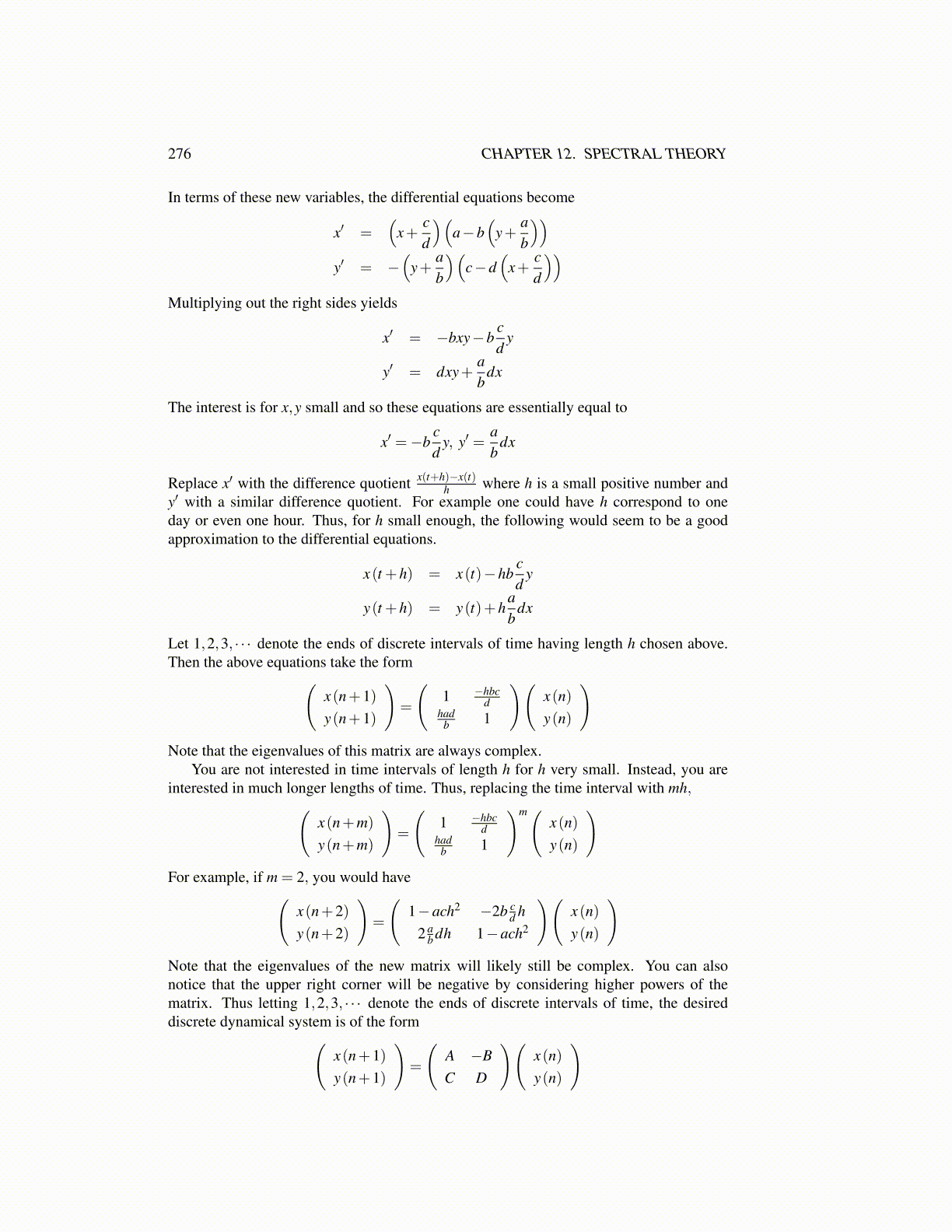
276 CHAPTER 12. SPECTRAL THEORY
In terms of these new variables, the differential equations become
x′ =(
x+cd
)(a−b
(y+
ab
))y′ = −
(y+
ab
)(c−d
(x+
cd
))Multiplying out the right sides yields
x′ = −bxy−bcd
y
y′ = dxy+ab
dx
The interest is for x,y small and so these equations are essentially equal to
x′ =−bcd
y, y′ =ab
dx
Replace x′ with the difference quotient x(t+h)−x(t)h where h is a small positive number and
y′ with a similar difference quotient. For example one could have h correspond to oneday or even one hour. Thus, for h small enough, the following would seem to be a goodapproximation to the differential equations.
x(t +h) = x(t)−hbcd
y
y(t +h) = y(t)+hab
dx
Let 1,2,3, · · · denote the ends of discrete intervals of time having length h chosen above.Then the above equations take the form(
x(n+1)y(n+1)
)=
(1 −hbc
dhad
b 1
)(x(n)y(n)
)Note that the eigenvalues of this matrix are always complex.
You are not interested in time intervals of length h for h very small. Instead, you areinterested in much longer lengths of time. Thus, replacing the time interval with mh,(
x(n+m)
y(n+m)
)=
(1 −hbc
dhad
b 1
)m(x(n)y(n)
)For example, if m = 2, you would have(
x(n+2)y(n+2)
)=
(1−ach2 −2b c
d h2 a
b dh 1−ach2
)(x(n)y(n)
)Note that the eigenvalues of the new matrix will likely still be complex. You can alsonotice that the upper right corner will be negative by considering higher powers of thematrix. Thus letting 1,2,3, · · · denote the ends of discrete intervals of time, the desireddiscrete dynamical system is of the form(
x(n+1)y(n+1)
)=
(A −BC D
)(x(n)y(n)
)